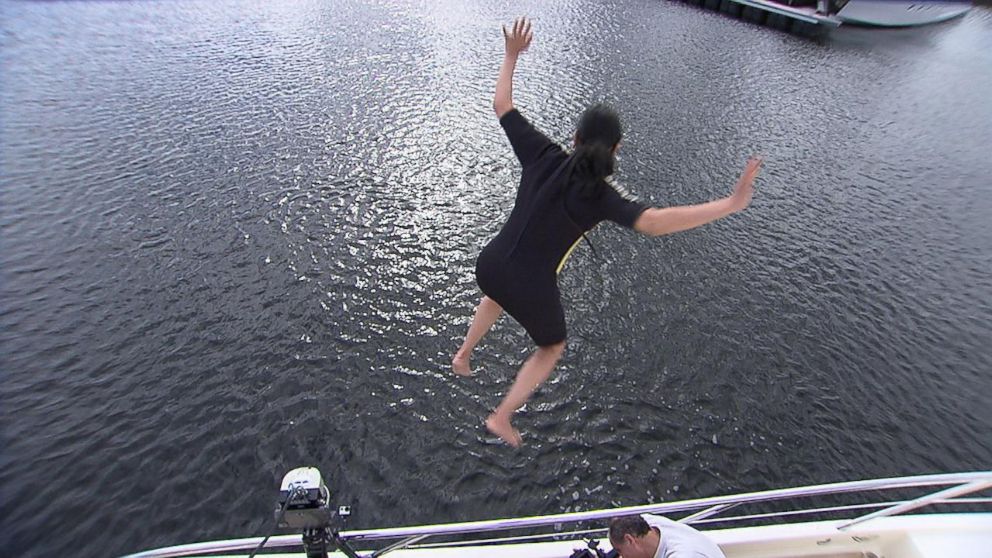Cruise ships use a combination of surveillance cameras, motion sensors, and advanced tracking systems to detect when someone has fallen overboard. These systems monitor the ship’s perimeter and can automatically trigger alerts.
Do cruise ships stop if you fall overboard

Once crew members learn that a person has gone overboard, they “immediately inform the Coast Guard, stop the ship, and turn around to help find the missing passenger,” a spokesperson for the industry trade group Cruise Line International Association told Insider.
When it comes to cruise ship safety, one question that often arises is, “How do cruise ships know if you fall overboard?” The answer lies in a variety of sophisticated systems and technologies implemented onboard these massive vessels.
In this article, we will explore some of the methods used to monitor and detect such incidents, ensuring the safety of passengers at all times.
Vessel Monitoring Systems
Cruise ships are equipped with advanced vessel monitoring systems that utilize sophisticated radar and sonar technologies. These systems continuously scan the surroundings of the ship, creating a virtual safety net of sorts.
If a person were to fall overboard, the monitoring systems would detect the anomaly and trigger an automated alarm.
In addition to radar and sonar, some cruise ships are now equipped with advanced video surveillance systems.
These surveillance cameras use facial recognition technology to monitor passengers’ movements and alert the crew if someone goes over the railings. These systems are usually integrated with the vessel monitoring system, providing an extra layer of safety.
Man Overboard Detection Systems
Some cruise ships are also equipped with specialized man overboard detection systems. These systems utilize a combination of motion sensors, infrared technology, and thermal imaging cameras to detect and track movements near the ship’s railings.
They can differentiate between normal passenger movements and a person falling overboard, immediately triggering an alarm.
These man overboard detection systems are typically integrated with the ship’s security systems and bridge control, ensuring that the crew is immediately alerted.
This allows for a rapid response to the situation, increasing the chances of locating and rescuing the individual who fell overboard.
Crew Training and Emergency Drills
Another vital component of cruise ship safety is the training and preparedness of the crew. All crew members undergo rigorous training programs that include emergency procedures, including man overboard incidents.
This training enables them to respond quickly and effectively, minimizing the time it takes to locate and rescue a person who has fallen overboard.
The crew’s response to a man overboard situation is well-coordinated and involves deploying life rings, launching rescue boats, and initiating a search and rescue operation.
Regular emergency drills are conducted to ensure that the crew is well-prepared and can efficiently handle such scenarios.
Passenger Accountability Measures
In addition to technological systems and crew training, cruise ships also implement passenger accountability measures to monitor the whereabouts of individuals onboard.
These measures can include the use of electronic keycards, which passengers must scan when embarking or disembarking the ship. This allows the crew to keep track of who is onboard at any given time.
Furthermore, cruise lines encourage passengers to notify the crew if they witness any suspicious behavior or see someone in distress near the ship’s railings.
This promotes a culture of vigilance and emphasizes the importance of ensuring the safety and well-being of all passengers.
Frequently Asked Questions
How Do Cruise Ships Know If You Fall Overboard?
Cruise ships utilize various safety measures, such as closed-circuit television (CCTV) cameras, motion sensors, and advanced technologies like infra-red systems. These technologies enable them to detect and respond promptly to any incidents of passengers falling overboard.
What Happens If Someone Falls Overboard On A Cruise Ship?
If someone falls overboard on a cruise ship, immediate action is taken. The ship’s crew initiates a man overboard (MOB) protocol, which includes deploying life buoys and notifying the bridge. The ship then slows down or changes course to conduct a search and rescue operation.
How Long Does It Take A Cruise Ship To Notice If Someone Falls Overboard?
Cruise ships have advanced surveillance systems, including CCTV cameras monitored by the crew. In most cases, the ship is alerted within minutes of someone falling overboard, enabling them to take swift action and begin search and rescue procedures.
Can Cruise Ships Track Passengers At All Times?
Cruise ships have the ability to track passengers at various times, mainly for security reasons. However, this tracking is usually limited to public areas and does not invade passengers’ privacy in their cabins or private spaces.
Conclusion
Cruise ships employ various systems, technologies, and protocols to ensure the safety of passengers and detect if someone falls overboard.
Vessel monitoring systems, man overboard detection systems, crew training, and passenger accountability measures all contribute to creating a secure environment onboard.
By utilizing advanced technologies and maintaining a well-prepared crew, cruise ships can swiftly respond to man overboard incidents, increasing the chances of rescue and preventing tragic outcomes.
These safety measures provide passengers with peace of mind as they embark on their memorable cruise adventures.
